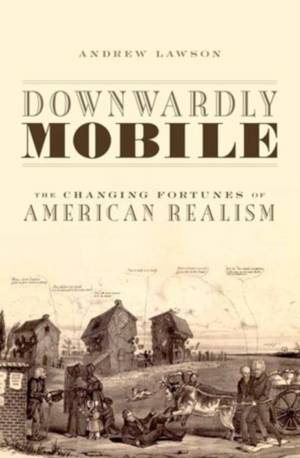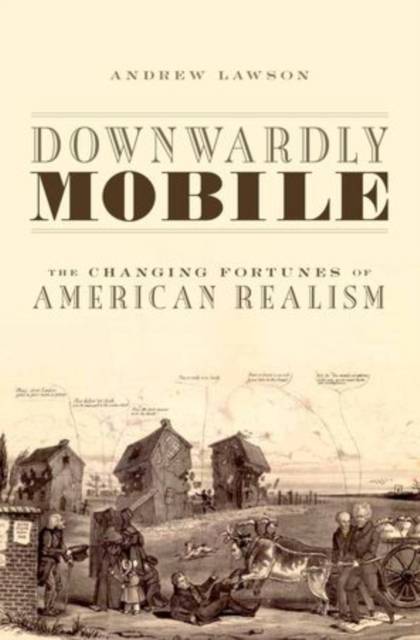
Je cadeautjes zeker op tijd in huis hebben voor de feestdagen? Kom langs in onze winkels en vind het perfecte geschenk!
- Afhalen na 1 uur in een winkel met voorraad
- Gratis thuislevering in België vanaf € 30
- Ruim aanbod met 7 miljoen producten
Je cadeautjes zeker op tijd in huis hebben voor de feestdagen? Kom langs in onze winkels en vind het perfecte geschenk!
- Afhalen na 1 uur in een winkel met voorraad
- Gratis thuislevering in België vanaf € 30
- Ruim aanbod met 7 miljoen producten
Zoeken
€ 61,45
+ 122 punten
Uitvoering
Omschrijving
In the unstable economy of the nineteenth-century, few Americans could feel secure. Paper money made values less tangible, while a series of financial manias, panics, and depressions clouded everyday life with uncertainty and risk. In this groundbreaking study, Andrew Lawson traces the origins of American realism to a new structure of feeling: the desire of embattled and aspiring middle class for a more solid and durable reality.
The story begins with New England authors Susan Warner and Rose Terry Cooke, whose gentry-class families became insolvent in the wake of the 1837 Panic, and moves to the western frontier, where the early careers of Rebecca Harding Davis and William Dean Howells were shaped by a constant struggle for social position and financial security. We see how the pull of downward social mobility affected even the outwardly successful, bourgeois family of Henry James in New York, while the drought-stricken wheat fields of Iowa and South Dakota produced the most militant American realist, Hamlin Garland. For these writers, realism offered to stabilize an uncertain world by capturing it with a new sharpness and accuracy. It also revealed a new cast of social actors-factory workers, slaves, farm laborers, the disabled, and the homeless, all victims of an unregulated market.
Combining economic history and literary analysis to powerful effect, Downwardly Mobile shows how the fluctuating fortunes of the American middle class forced the emergence of a new kind of literature, while posing difficult political choices about how the middle class might remedy its precarious condition.
The story begins with New England authors Susan Warner and Rose Terry Cooke, whose gentry-class families became insolvent in the wake of the 1837 Panic, and moves to the western frontier, where the early careers of Rebecca Harding Davis and William Dean Howells were shaped by a constant struggle for social position and financial security. We see how the pull of downward social mobility affected even the outwardly successful, bourgeois family of Henry James in New York, while the drought-stricken wheat fields of Iowa and South Dakota produced the most militant American realist, Hamlin Garland. For these writers, realism offered to stabilize an uncertain world by capturing it with a new sharpness and accuracy. It also revealed a new cast of social actors-factory workers, slaves, farm laborers, the disabled, and the homeless, all victims of an unregulated market.
Combining economic history and literary analysis to powerful effect, Downwardly Mobile shows how the fluctuating fortunes of the American middle class forced the emergence of a new kind of literature, while posing difficult political choices about how the middle class might remedy its precarious condition.
Specificaties
Betrokkenen
- Auteur(s):
- Uitgeverij:
Inhoud
- Aantal bladzijden:
- 208
- Taal:
- Engels
Eigenschappen
- Productcode (EAN):
- 9780199375028
- Verschijningsdatum:
- 1/07/2014
- Uitvoering:
- Paperback
- Formaat:
- Trade paperback (VS)
- Afmetingen:
- 156 mm x 234 mm
- Gewicht:
- 326 g

Alleen bij Standaard Boekhandel
+ 122 punten op je klantenkaart van Standaard Boekhandel
Beoordelingen
We publiceren alleen reviews die voldoen aan de voorwaarden voor reviews. Bekijk onze voorwaarden voor reviews.









